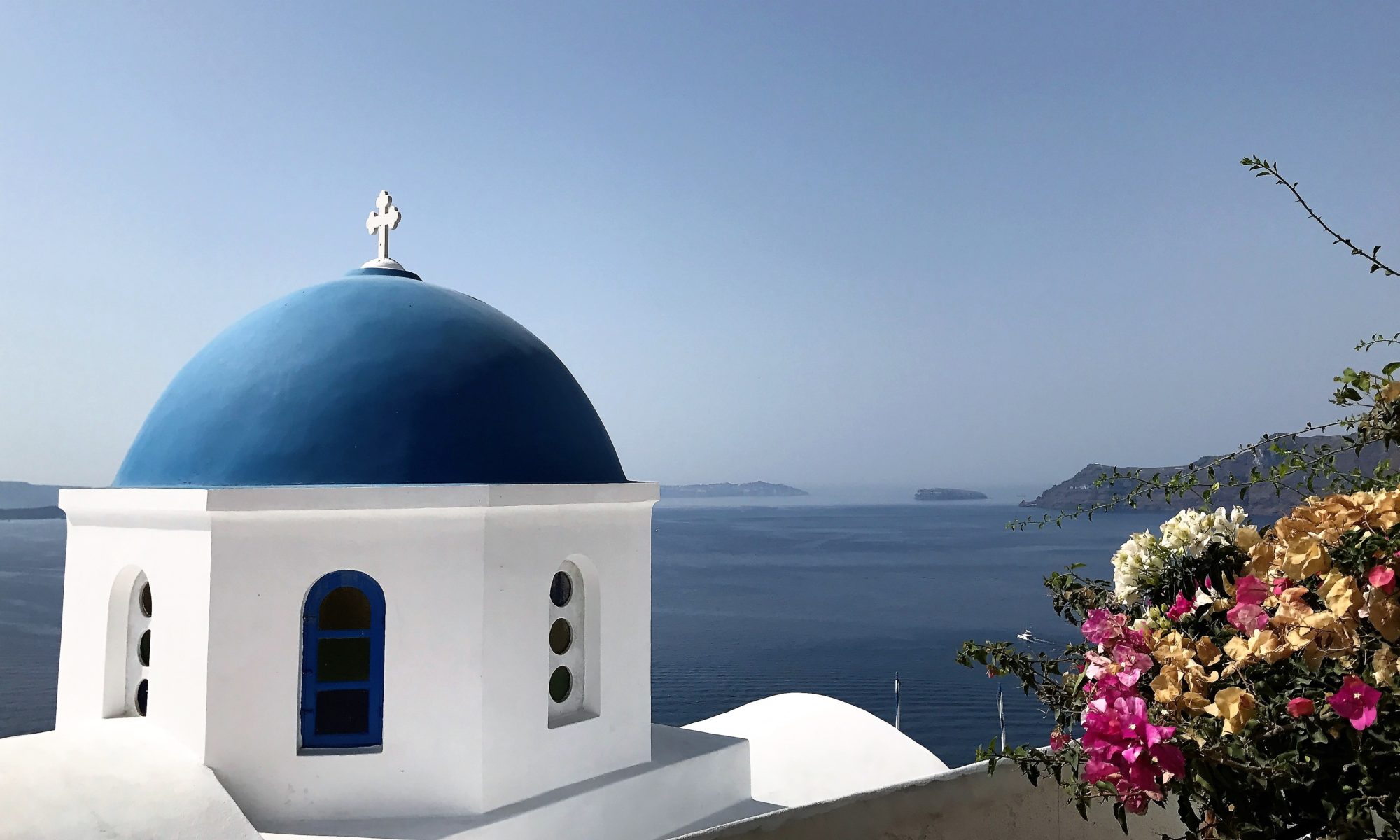
We arrive mid morning at the Agia Triada (Holy Trinity) Monastery. Already the car park is busy with a number of tourist buses arriving and departing. I gaze up and the sun drenched northwest facade and entrance belfry and know that I am about to experience something special.

Given its location on Crete’s quiet Akrotiri peninsula, this Greek Orthodox settlement has a long and colorful history in the region. It is well worth lingering a while under a magnolia or in the shade of a portico, particularly in the lull between buses. Take time to learn about its story of the past and embrace and reflect on its place in the present.

History of the Monastery
The Holy Trinity Monastery was founded by the brothers Ioannis (Ieremias) and Loukas (Lavrentios) Tzangaroli in 1611. They were already living a monastic life at the nearby Gouverneto Monastery when they began transforming an existing church on the site into a convent. Coming from a well-educated Venetian-Cretan family, the brothers contributed their own time and funds to the project, aided by large land donations from local supporters.

Ioannis designed and oversaw the construction of the complex until his death in 1634, after which Loukas took over and continued the work. By 1645, most of the church (katholikon) and other buildings were completed, but the Cretan War and the Ottoman invasion interrupted further construction. Despite this, the monastery managed to sustain itself through olive oil and wine production, along with other agricultural activities such as citrus farming, animal husbandry and beekeeping.

By the start of the Greek War of Independence in 1821, the monastery had grown prosperous, housing many valuable relics and icons. In June 1821, Ottoman forces looted the monastery. However, the monks, forewarned of the attack, hid the most precious relics in the crypts and left enough icons and holy vessels in the church to avoid suspicion. They fled through the Stavros Mountains and were transported by ship to the village of Kalyves.

The monastery remained abandoned for six years until two monks returned and began restoration efforts. They rebuilt the church’s dome and carried out extensive renovations. The monastery acquired new icons, and by 1832, it had established a school. Today, the monastery stands as a testament to the resilience of its monastic community and remains an important center of religious and cultural heritage.
Church
At the beginning of the Greco-Turkish War (1896–1897), the monastery served as a hospital and a refuge for the civilian population.

By the 1970s, the complex had fallen into decline again. After officials designated it as a historic protected monument, restoration efforts revived and restored it.
The interior of the katholikon reflects the style of the late 16th century, influenced by the Cretan Renaissance and Venetian Mannerism. The artworks reveal this style through awkward movement, exaggerated poses, and distorted human forms.

The decoration of the current interior is largely a collection from 1821 onwards, replacements for the riches previously sacked. Most are sourced from local workshops. Two precious 17th Century icons of Saint Ioannis and the Savior Christ are preserved and exhibited in the museum.
Museum

In addition to these two precious icons, the museum houses other decoration, manuscripts and vestments from the original katholicon. Among these is: a 12th Century scroll with the liturgy of Vassilios the Great; the “possessor’s” epitrachelion (stole) from 1757; and the “Blessing Cross” of the monk Martinianos (early 19th Century).

Community & Economy

With the efforts of the religious fraternity, the Monastery has been restored to prosperity. It continues today as an important religious and spiritual centre of Crete. It is an economic hub of the community earning income from tourism. In addition, the monastery has re-established its vineyards, olive and citrus crops, beekeeping and livestock production and animal husbandry.
As well as contributing to the local economy, the monastery prides itself as a place of care, respect and love for nature and God. It is a favorite destination for locals and foreign believers alike.

Good To Know
The Agia Triada Monastery complex is open for visitors 5am – 8pm everyday except Wednesdays.
Tours run from nearby Chania. If you don’t have time for a day trip, take a short detour on the way to Chania’s airport. The airport is less than 5 minutes (3km) from the site and yet a world away.
Take time to reflect on the spiritual heritage of the Agia Triada with a quiet moment in the church and gardens. Learn from history in the museum with its precious displays. On the way out, support the going concern by purchasing something from the cellar door and shop.

Would I Return?
Yes. Most definitely.


One Reply to “Agia Triada of Tzangaroli Monastery”